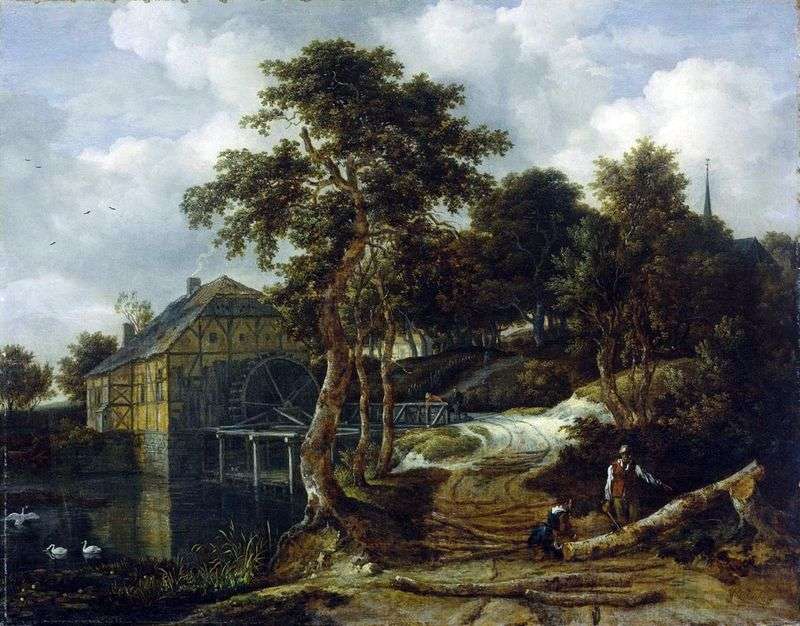
Agricultural structures appeared on the Dutch canvases of Van Gogh almost as often as the squalid peasant huts. For the artist, they were an integral part of the existence of people living and working on the land.
Vincent felt that their life was truly real, such as nature itself may have conceived it. But, at the same time, he felt uneasy with the feeling of monstrous injustice in realizing the gravity and hopelessness of peasant life.
In this landscape of 1884, Van Gogh depicted an old water mill. The darkened wooden structure rises in the middle of a flat field. The author makes the horizon line quite low, due to what the mill seems monumental. Through the thick clouds, the summer sun is visible, but the building remains in the shade. The artist pays much attention to engineering subtleties, carefully writing out the details of the mechanism.
The painting is painted in subdued earthy tones. However, from other works of the Dutch period, she is distinguished by a rather pronounced transparency. It is already beginning to emerge that desire for a natural transfer of the light and air environment, which will later become the basis of landscape painting by Van Gogh.
The sky no longer seems to be an “alien” element, its ultramarine reflections are visible in the light, air mass of distant trees, on the dilapidated roof of the old mill. The manner of the execution of the landscape was affected by the influence of the Barbizon school, the ideas of which Van Gogh was fascinated at the beginning of the creative path.
 The old mill by Vincent Van Gogh
The old mill by Vincent Van Gogh Peasant knits sheaves (according to Mill) by Vincent Van Gogh
Peasant knits sheaves (according to Mill) by Vincent Van Gogh Plow and harrow (according to Mill) by Vincent Van Gogh
Plow and harrow (according to Mill) by Vincent Van Gogh The village at sunset by Vincent Van Gogh
The village at sunset by Vincent Van Gogh Two women on the heathland by Vincent Van Gogh
Two women on the heathland by Vincent Van Gogh Arles Ladies by Vincent Van Gogh
Arles Ladies by Vincent Van Gogh Landscape with Mill by Jacob van Ruisdal
Landscape with Mill by Jacob van Ruisdal Green wheat ears by Vincent Van Gogh
Green wheat ears by Vincent Van Gogh